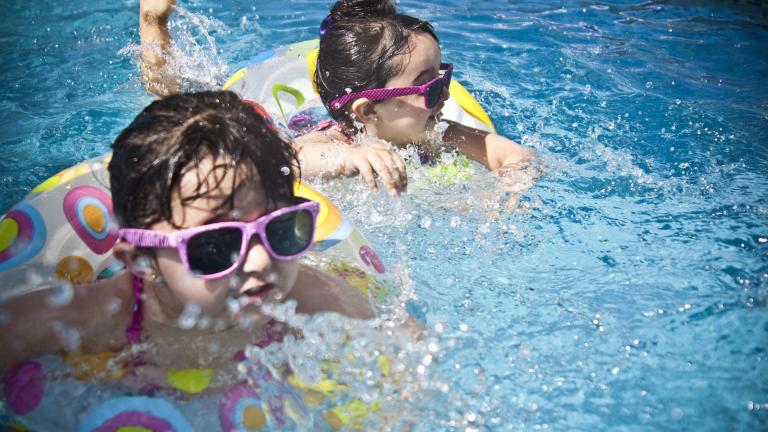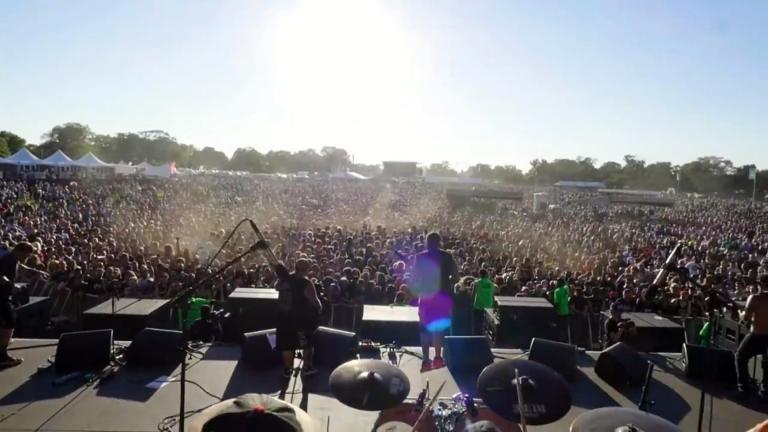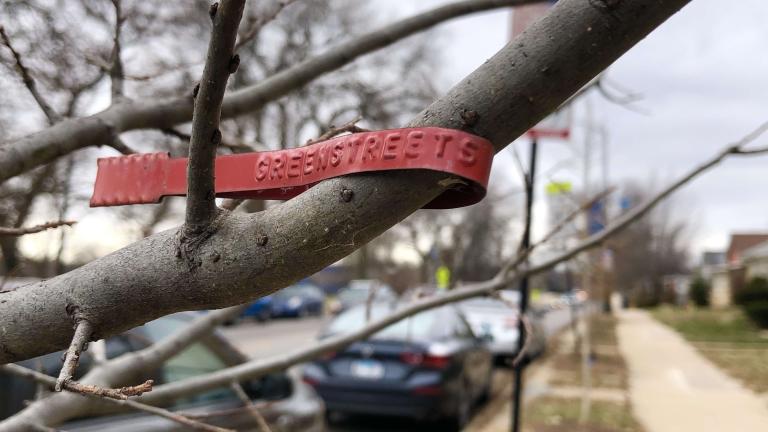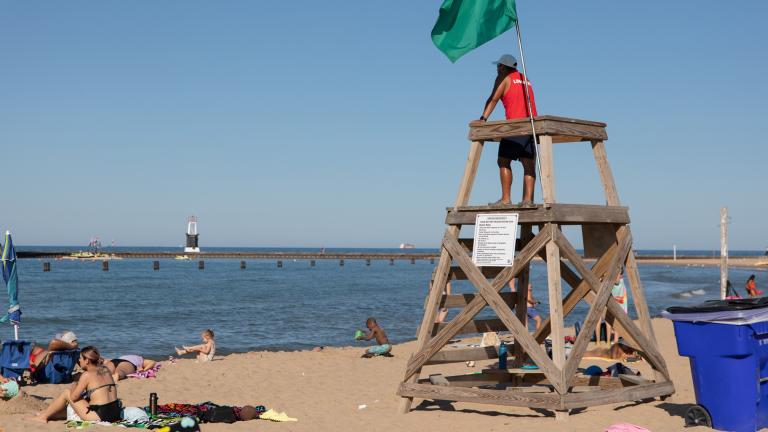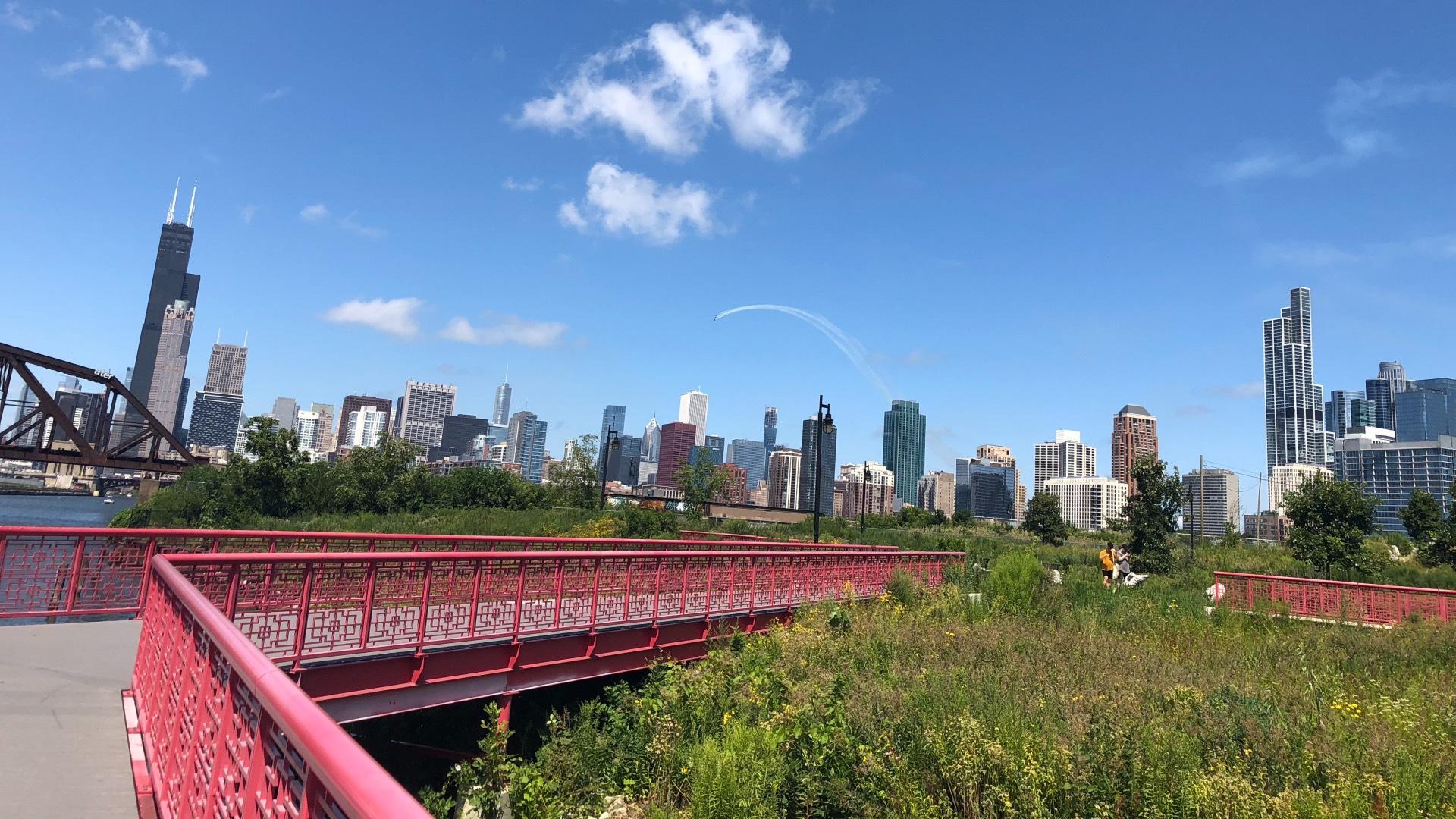 Ping Tom Park, exemplifying Chicago’s motto of “City in a Garden.” (Patty Wetli / WTTW News)
Ping Tom Park, exemplifying Chicago’s motto of “City in a Garden.” (Patty Wetli / WTTW News)
The Trust for Public Land’s annual ParkScore rankings of park systems in the nation’s 100 largest cities added equity as a metric for its latest ratings, creating significant shifts in its 2021 index.
Chicago jumped to fifth place, up from 10th in 2020. The city came in behind first place Washington D.C.; St. Paul, Minnesota, in second; Minneapolis in third; and Arlington, Virginia, in fourth.
Chicago continued to earn high marks for access, with 98% of residents living within a 10-minute walk of a park versus the national average of 55%. The level of access holds true across age, income level and race/ethnicity.
The city’s parks are also ahead of the curve in terms of amenities measured by the index, including basketball hoops, bathrooms, playgrounds, splash pads and senior centers.
Where the city falls short is acreage. With just 9% of its land devoted to parks and recreation, Chicago lags behind the national median of 15%.
Along with access, acreage and amenities, ParkScore also rates investment and now equity. The new equity factor was inspired by the national awakening on racial justice, according to a statement from the Trust for Public Land.
Out of 100 possible points, Chicago earned 90 for equity.
According to ParkScore data, Chicago residents in low-income neighborhoods have access to 25% more park space per person than the city median and 25% more than those in high-income neighborhoods.
Furthermore, Chicago residents in neighborhoods of color have access to 22% more park space per person than the city median and 12% more than those in white neighborhoods. This included what ParkScore identified as Black neighborhoods, Asian neighborhoods and neighborhoods of multiple races, which had 26%, 39% and 57% more space per person than the city median, respectively. The exception was what ParkScore identified as Hispanic and Latinx neighborhoods in Chicago, which had 40% less space per person than the city median.
In a statement, Park District officials pointed to ongoing investment in communities “most in need.” Projects cited include Gately Indoor Track and Field complex in Roseland and the Ford Calumet Environmental Center in Big Marsh Park on the Southeast Side.
Contact Patty Wetli: @pattywetli | (773) 509-5623 | [email protected]

